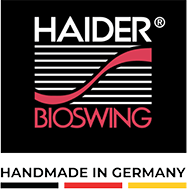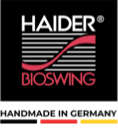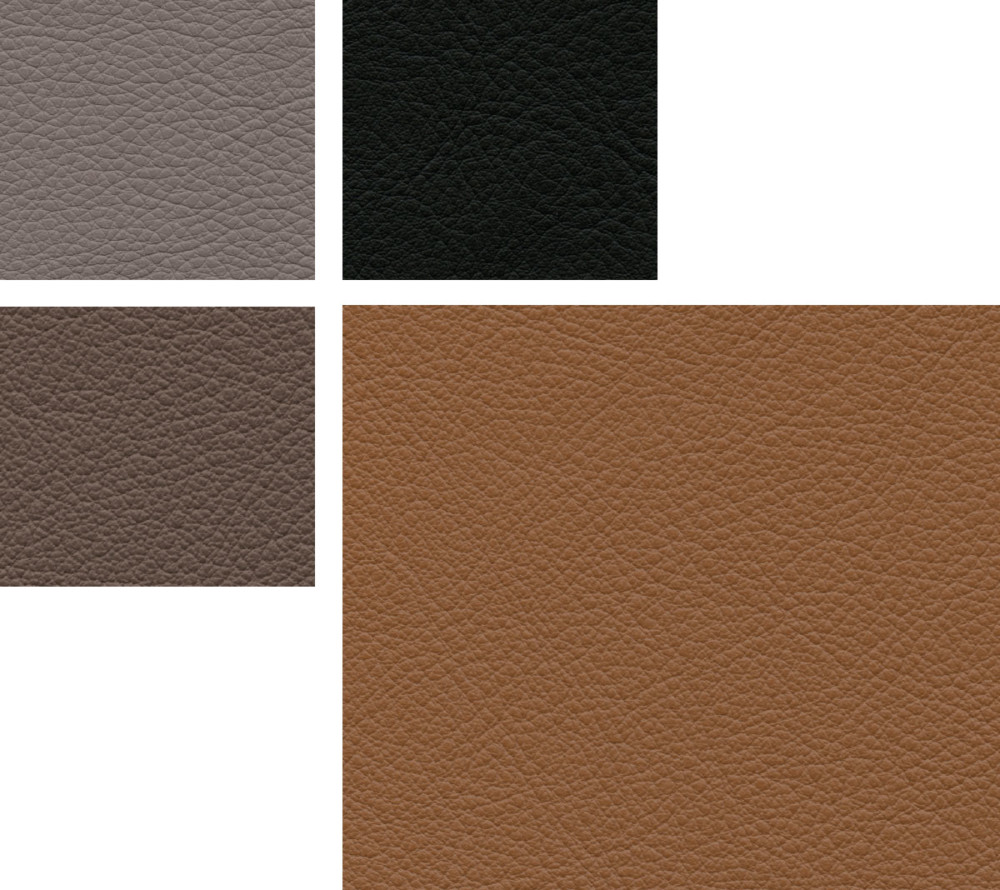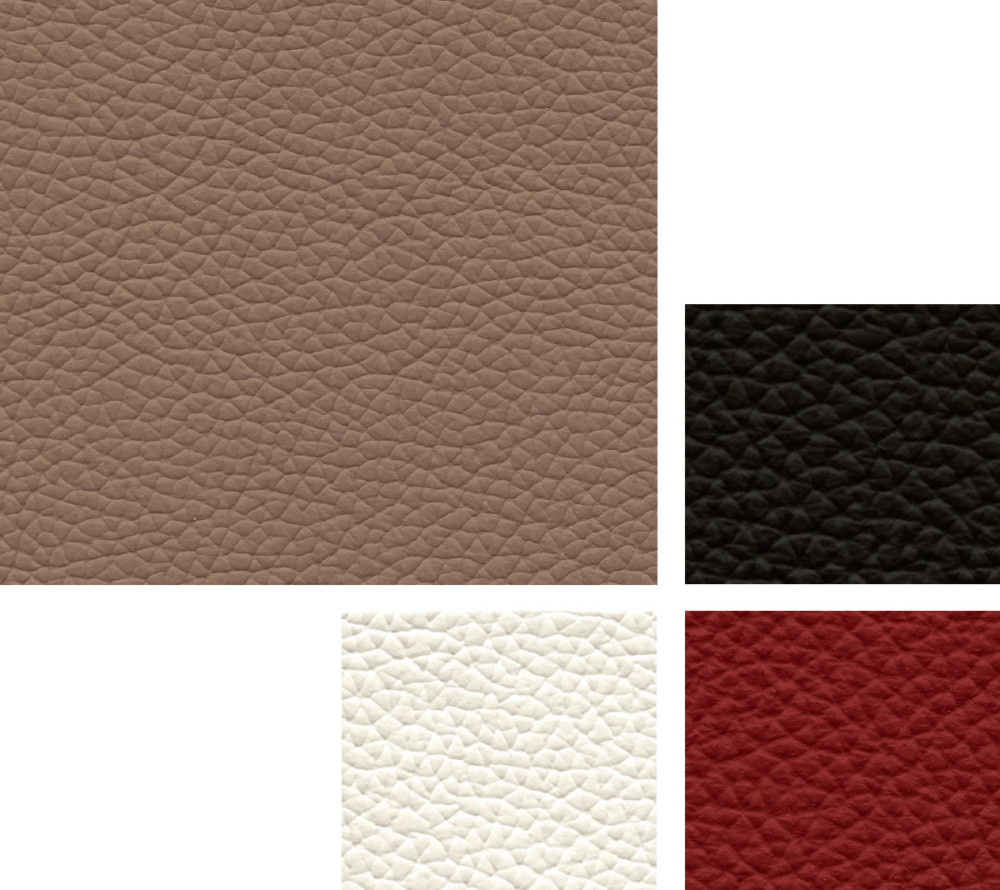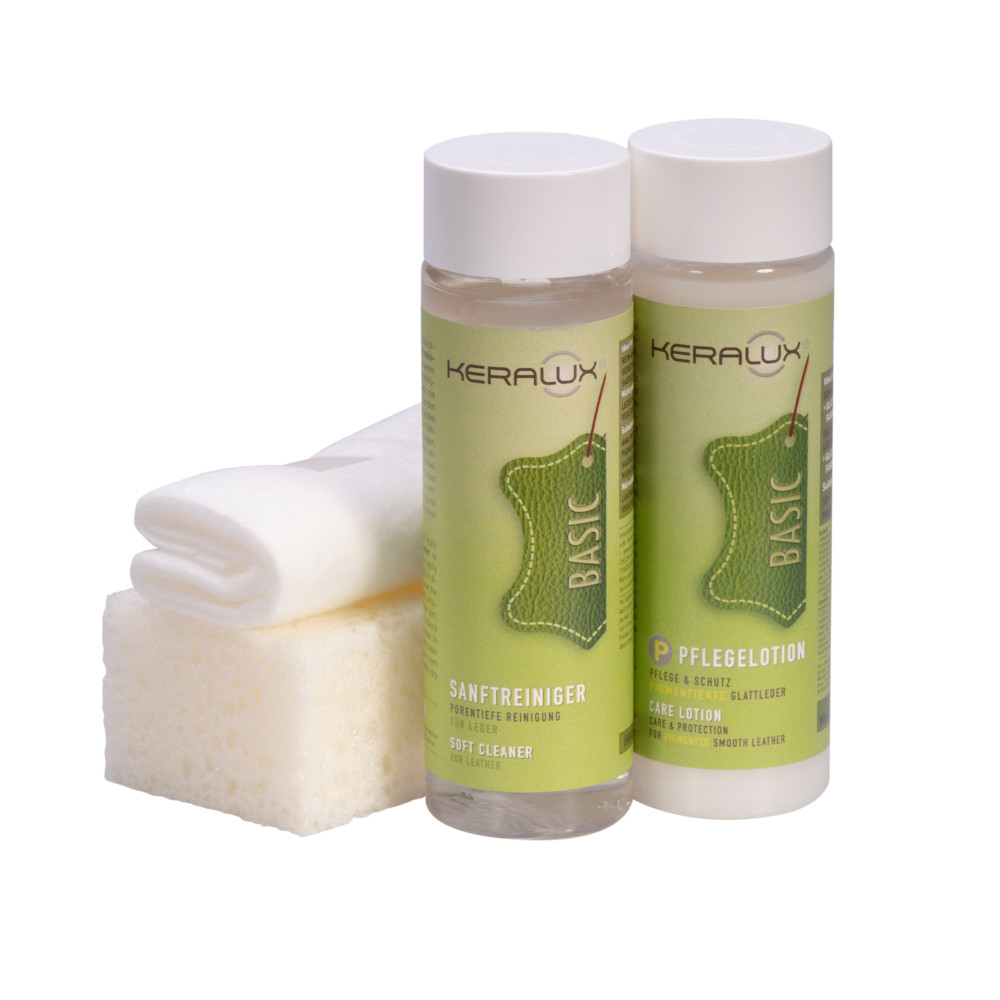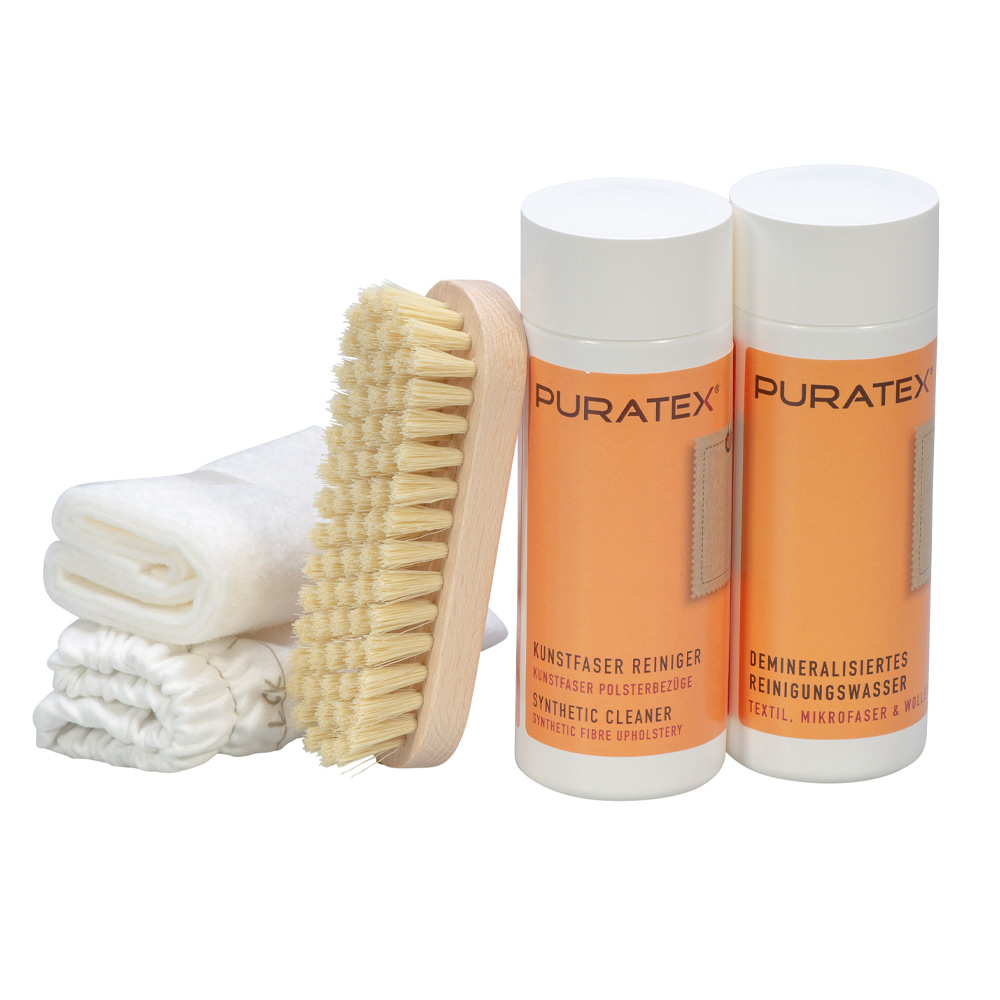To keep leather attractive, wonderfully soft to the touch, and naturally long-lasting, it occasionally needs your attention. Regular cleaning and the application of essential moisturizing and care agents are key. This ensures it remains as beautiful as it was on the first day.
Important: Leather should be cleaned first and then cared for. Just like human skin, leather can only absorb care agents properly when its pores are clean and free of dirt. This is why so-called “all-in-one care products” are unsuitable for the regular maintenance of high-quality leather furniture, as they often just embed dirt into the leather.
Every type of leather requires individual care!
Since different types of leather vary significantly in their material properties, cleaning and care must be tailored to the specific characteristics of the leather.
For example, leather enthusiasts greatly value open-pored, breathable aniline leather for its wonderfully soft and tactile surface. However, this natural quality also makes aniline leather more delicate and in need of intensive care. To navigate daily life safely, aniline leather particularly benefits from re-oiling, moisturizing, impregnation, and UV protection.
In contrast, the surface of pigmented, coated leather is protected by a colored layer. As a result, this type of leather is very low-maintenance, easy to clean, and well-suited for everyday use. The appropriate care cream provides this leather with ample moisture, while requiring less re-oiling, along with UV protection and antioxidants to ensure long-lasting durability.
At HAIDER BIOSWING, we recommend one of the leading companies on the German market for leather care: LCK GmbH / www.lederpflege.de.
There, you’ll find tailored care lines for every type of leather, ensuring that your leather receives exactly the care it truly needs:
- Thorough yet gentle cleaning
- Essential moisture replenishment
- Optimal re-oiling to maintain its supple feel
- Protective impregnation
- Effective UV protection to preserve its vibrant color
- Antioxidants for long-lasting durability
Visit the shop directly here: http://www.bioswing.moebelpflegeshop.de
Upholstered furniture with fabric covers captivates with its incredible variety of colors and materials. Soft fabrics, such as microfiber, offer a particularly cozy experience.
By regularly cleaning and caring for your upholstery with the PURATEX® Textile Care Range, you can ensure that your fabrics remain clean and well-maintained for a long time.
- Vacuum the upholstery regularly using the upholstery nozzle of your vacuum cleaner (max. 500 watts!) to remove dust and everyday dirt.
- Refresh the fabric by wiping the surface with a damp Staub-Fix cloth. This provides your chair with essential moisture, helping it retain its freshness and beauty.
- Always use distilled water when wiping down upholstery to avoid unsightly limescale stains.
- Only use professional cleaning products designed for your office chair; never use solvent-based household cleaners or homemade solutions.
- Perform a maintenance cleaning of your upholstery (fabric or microfiber) approximately every six months with an appropriate cleaner.
- After cleaning, allow the upholstery to dry thoroughly and then reapply impregnation to maintain its dirt-repellent properties.
- Act on stains IMMEDIATELY by gently dabbing with an absorbent cloth (e.g., paper towel).
- Be mindful of clothing that could transfer color onto your chair (e.g., dark jeans). Avoid sitting directly on the delicate fabric surface if your clothing has rivets, zippers, or sharp-edged buttons.
Visit the shop directly here: http://www.bioswing.moebelpflegeshop.de (Please select the appropriate fabric for your material type.)
Tips for Proper Handling of Leather Furniture
- Avoid microfiber cloths: When cleaning your leather chair, do not use microfiber cloths as they can damage the leather surface.
- Use distilled water: Always clean leather with distilled water to prevent unsightly limescale stains. (Refer to the specific instructions for vegetable-tanned leather in this regard!)
- Prevent discoloration: Color-intensive clothing (e.g., dark jeans), decorative pillows, blankets, or similar items can stain leather. Red accessories are particularly “risky.” Protect light-colored leather with intensive protection or avoid such contact altogether.
- Avoid excess moisture: Too much wetness can harm leather furniture. Always clean leather using a “slightly damp” method rather than making it overly wet.
- Protect from direct light: Direct sunlight or artificial light can lighten the color and dry out leather.
- Keep away from heat: Excessive heat can damage leather upholstery. Ensure at least 30 cm of distance between leather furniture and heating sources.
- Protect from pets and sharp objects: Animals, zippers, and sharp objects can damage leather surfaces. Avoid such contact whenever possible.
- React quickly to stains: Act immediately when spills occur. For liquid spills, gently blot the area with an absorbent paper towel (e.g., kitchen roll) and clean with an appropriate cleaner. Avoid applying pressure, as this could push the stain deeper into the leather.
What Are the Characteristics of Pigmented Smooth Leather?
About 90% of leather used for furniture upholstery is pigmented smooth leather. This leather is durable, low-maintenance, and easy to care for.
- Surface treatment: After tanning and dyeing, pigmented leather is coated with an additional pigment layer. This coating hides pores, individual skin patterns, scars, and other natural features of the cowhide.
- Thickness of pigment layer: The thickness of this layer often depends on the visibility of imperfections like brand marks, scars, or insect bites, as these are concealed during the process. In some cases, an artificial grain pattern is embossed to mimic natural leather texture.
- Feel and temperature: Heavily pigmented smooth leather has a stiffer, moderately warm feel. On colder days, it may feel cool as it doesn’t retain body heat well. Conversely, on hot days, it can cause sweating due to reduced breathability.
- Protection: The surface treatment provides excellent stain resistance as liquids cannot easily penetrate the leather. This makes pigmented smooth leather highly durable, low-maintenance, and practical for everyday use.
- Cleaning: It is easy to clean, and most stains can be effectively removed with suitable cleaners.
What Is Vegetable-Tanned Leather?
Vegetable-tanned leather is characterized by a tanning process that uses only plant-based materials. Bark from trees like oak, spruce, and birch, as well as leaves or fruits, are commonly used.
- Historical significance: Vegetable tanning was the most common leather-making method for centuries, with evidence of its use dating back approximately 5,000 years. Today, only about 10% of leather production involves vegetable tanning.
- Care challenges: This leather type is highly sensitive and cannot even be cleaned with water, making its maintenance more demanding.
Olive Leaf Tanning: An Ecological Leather Production System
The company wet-green GmbH has developed a purely ecological tanning agent and process. This breakthrough allows the production of premium-quality leather from renewable raw materials, setting new standards in sustainability.
- Process: The tanning agent is prepared similarly to a natural tea extract, using only by-products of olive cultivation—specifically, olive leaves.
- Benefits: This method produces biodegradable and skin-friendly premium leather, aligning with growing consumer awareness of environmental sustainability.
How to Care for Vegetable-Tanned Leather
- Use only specific, gentle cleaning agents designed for vegetable-tanned leather to avoid damaging the surface.
- Remove coarse dirt using a soft brush or the upholstery nozzle of a vacuum cleaner (max. 500 watts).
For more details, visit: www.lederpflege.de
